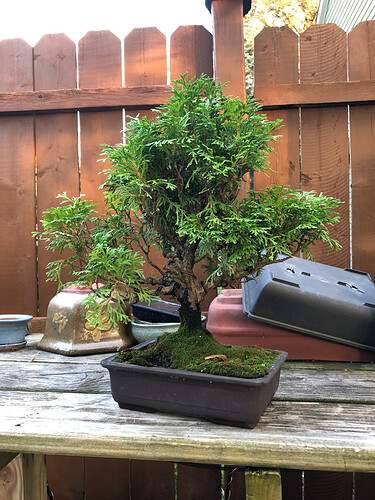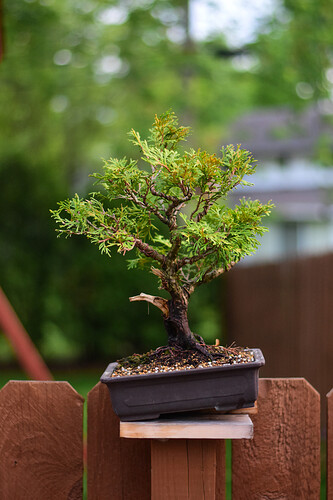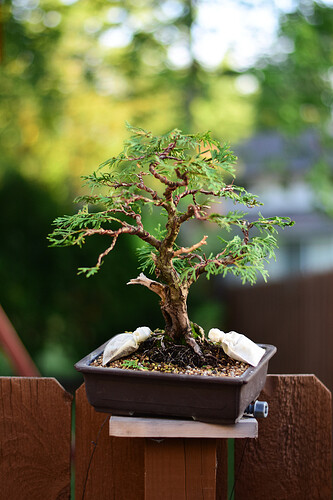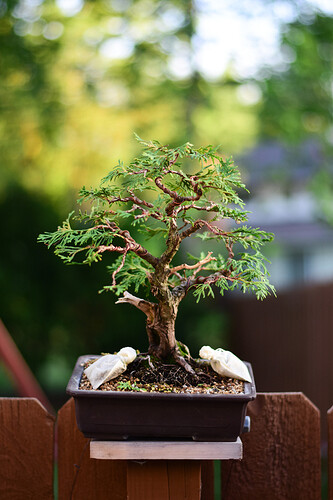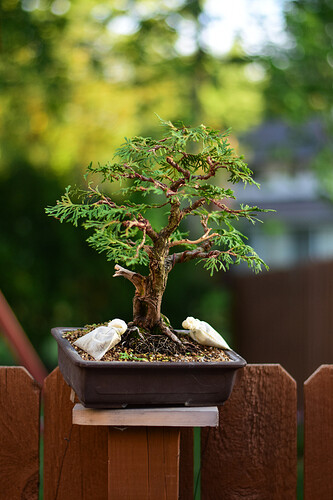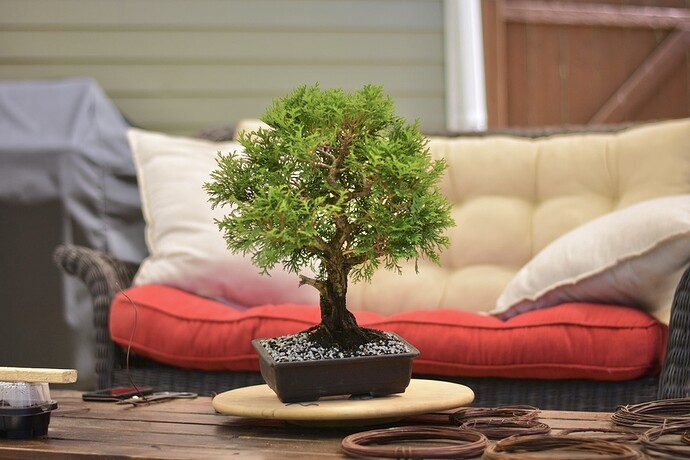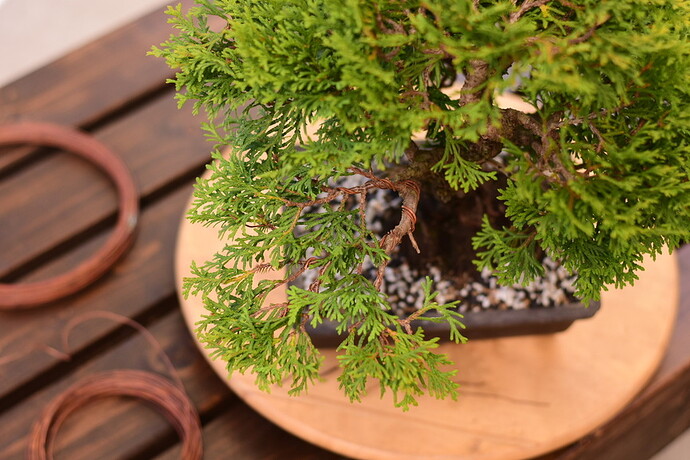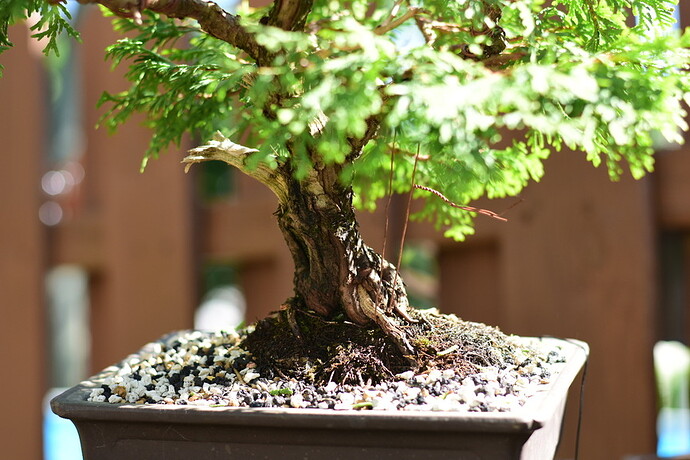Another cool Thuja to share!
Based on the dense/rounded growth pattern I believe that this is a “Hetz Midget”, but am not certain about that. I purchased it from a local nursery and don’t believe it was ever worked as bonsai, only left to grow in to the pot (re: super root bound)
Tree on 7/31/19
As you can see above, the tree is much less coarse and far more random in the orientation of it’s fronds compared to regular Thuja. The photo above was taken after a very hard pruning and some wiring to see how the branches took to it. When purchased it essentially looked like a bush.
Shortly after the above photo was taken, I wired it as seen below. My intention with the wiring was not to style the tree but to start to see what kind of structure was hidden there and give myself time to think about where the tree could go. I removed a few branches, created some deadwood and set out to learn more about the growth pattern.
Tree on 6/2/20
What I’ve learned about this particular cultivar is that it wants to be a bushy, rounded form. It does not throw the strong vertical/horizontal fronds of regular Thuja but instead throws them every-which-way, even upside down. They do not seem to mind these upside-down fronds either - they grow strong and healthy. Had I left the tree wired as above, it would have filled in and once again looked like a bush. Next time you walk around your neighborhood, take a look at your neighbor’s landscaping, there may very well be one of these there.
Same front, leaned and styled 6/25/20
A couple days ago I finally got the time to get to this tree and began trying to make something more interesting out of it. What you can’t see (and I should add photos) is that the tree was previously almost dead vertical. The trunk had interesting movement but did not feel like it had any depth. So the first thing I did was lean the tree forward. From there I began thinning/removing unnecessary foliage/branches and wiring the branches to resemble that of a more mature tree.
YES - agreed, it does not look like any thuja you’ve seen out in the wild. In fact, it looks an awful lot like a deciduous tree to me. But hey why fight the tree?
As I wired it, I noticed a couple of other potential fronts and wanted to share them for feedback.
What I prefer about these options is they make better use of the awkward intersection of the large jin and lowest branch. Which is your favorite?
Option 2 - more movement to the right, more interest in the lower trunk
Option 3 - even more movement to the right, even more interest in the lower trunk
I am looking forward to seeing how the tree responds and anticipate heavy editing throughout the next growing seasons to keep it from getting too dense. I’ll upload more photos of the tree from all angles (before/after) later.
